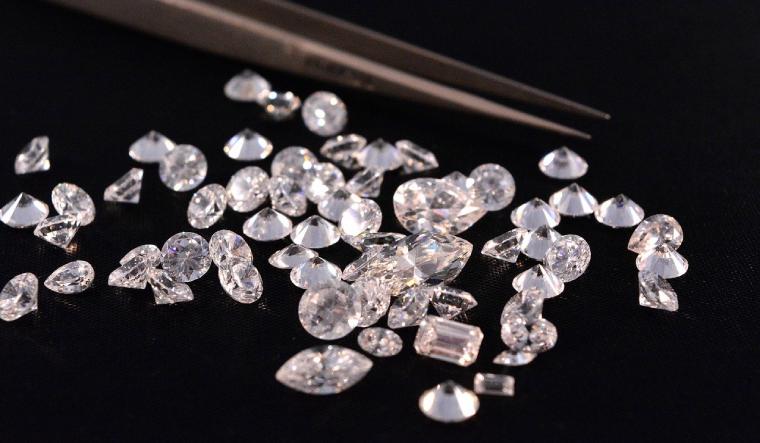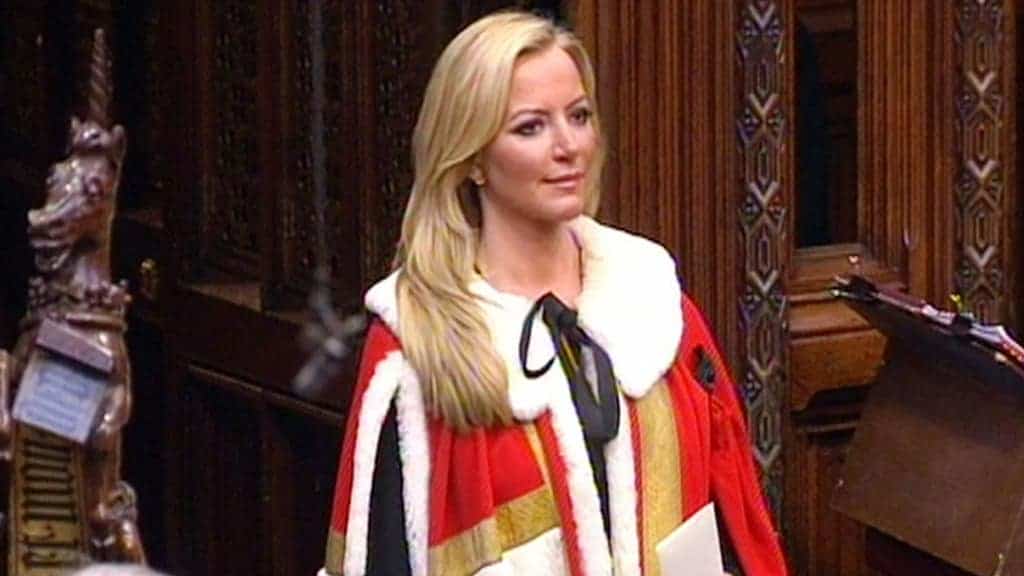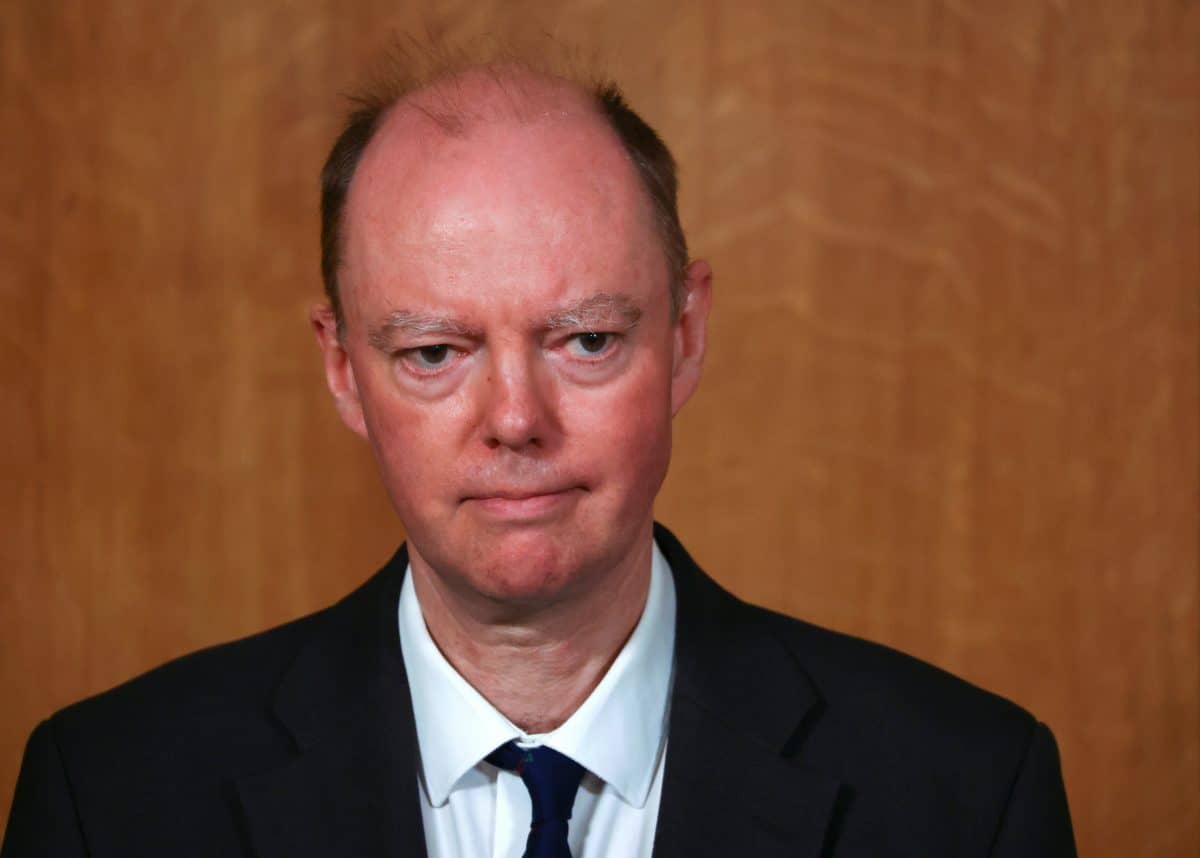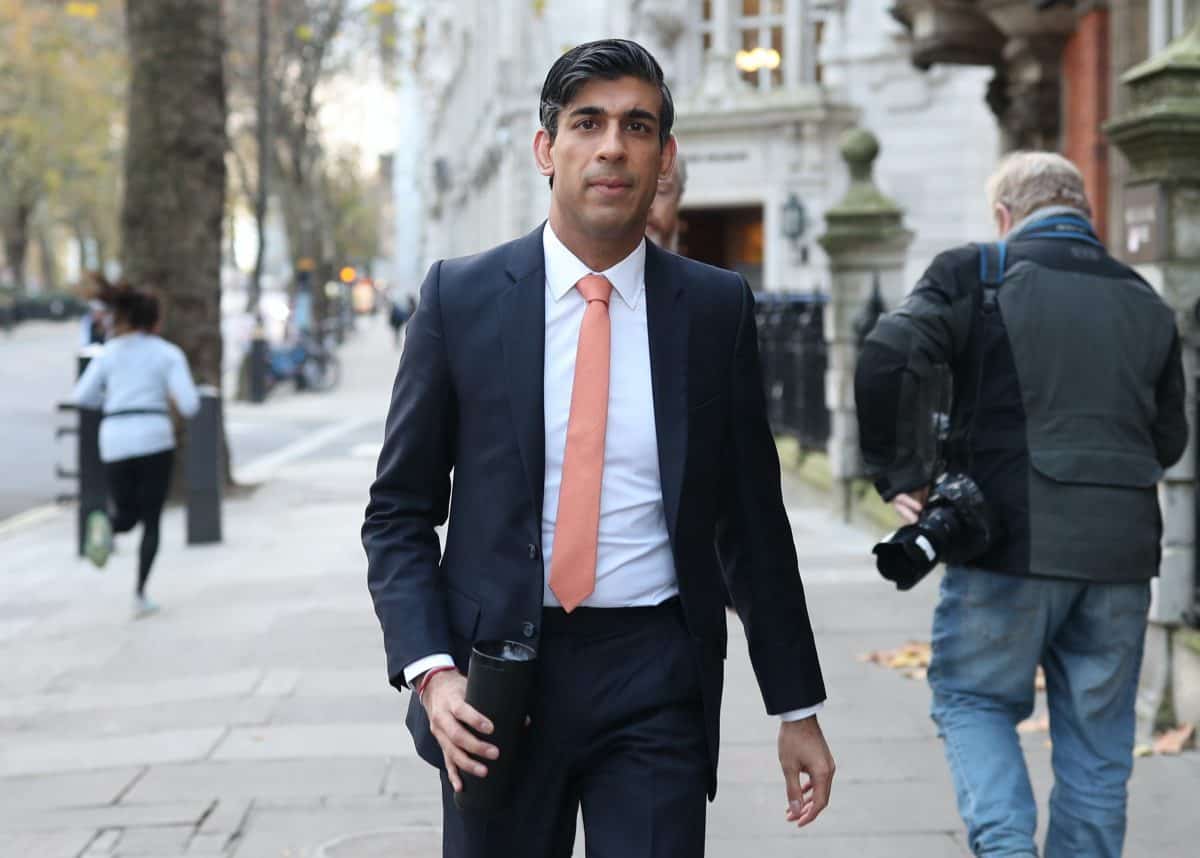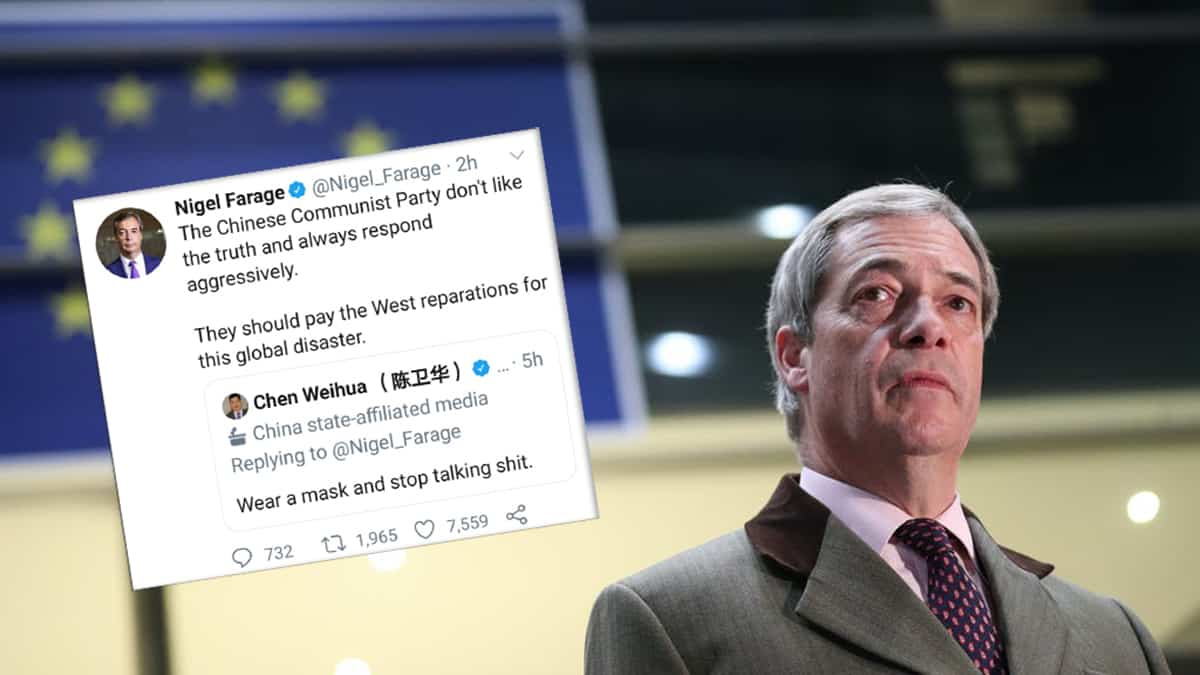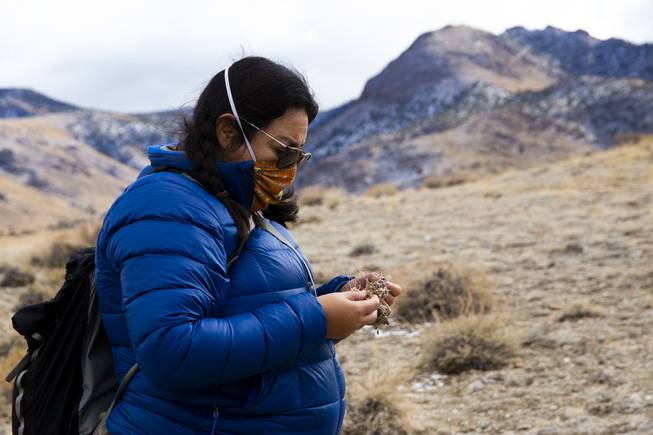
Botanist Naomi Fraga examines a Tiehm’s buckwheat plant at Silver Peak Range in Esmeralda County, Monday, Dec. 14, 2020.
By John Sadler (contact)
Sunday, Dec. 20, 2020 | 2 a.m.
Tiehm's Buckwheat

Related Content
Rare Nevada wildflowers were wiped out by squirrels, U.S. agencies say
Irreplaceable desert plants destroyed in western Nevada; human interference suspected
Rare Nevada wildflower could get state protection
The wildflowers, dusted in fresh snow on the isolated ridge in the west-central Nevada, were dead.
Botanist Naomi Fraga picked up the dried remains of two of the plants, placing them in her bag and slinging it back over her shoulder.
The specimens — of the rare Tiehm’s buckwheat — were leftovers from an event earlier this year that decimated somewhere around half of the global population of the plant.
The U.S. Fish and Wildlife Service determined the destruction was the work of small mammals, possibly ground squirrels; some environmentalists aren’t convinced.
“When you talk about the extinction crisis, we’re here,” Fraga said. “We’re on the front lines of the extinction crisis right here with this plant.”
Tiehm’s buckwheat grows exclusively on 21 acres in a remote area of the Rhyolite ridge in Esmeralda County, the third least-populated county in the United States.
Much of the flower’s range sits on a site that Australian mining company Ioneer has proposed to turn into a lithium mine. According to the company, the ridge holds North America’s largest deposits of lithium and boron, the former of which is a key ingredient in the batteries used in most electric cars.
The plant has triggered a battle over the future use of the site, with the Center for Biological Diversity, which Fraga works alongside, filing a suit in U.S. District Court in Las Vegas to push the Bureau of Land Management to take action to protect the plant and the U.S. Fish and Wildlife Service to list the plant as an endangered species.
“Basically what we’re asking U.S. Fish and Wildlife Service to do here is to recognize the urgent nature of the situation and list the buckwheat as an endangered species under its emergency listing authority,” said Scott Lake, a Nevada legal advocate with the Center for Biological Diversity.
Patrick Donnelly, Nevada state director at the Center for Biological Diversity, has said listing the plant and thereby requiring certain protections was the goal.
“It does not matter if it was a squirrel or a kangaroo or aliens or (Ioneer executive chairman) James Calaway himself,” Donnelly said. “The plant needs to be listed under the Endangered Species Act. It should have been listed when we discovered this damage.”
Protecting Tiehm’s buckwheat, or any species, for that matter, is important because extinction could cause an ecological domino effect on other plants and animals, environmentalists say. A 2016 study in the journal Nature Communications showed that plant extinctions could have more effect on potential animal extinctions than vice versa.
The center’s lawsuit seeks emergency protections for Tiehm’s buckwheat under the federal Endangered Species Act. Monday, the center will file its final briefing in the lawsuit, which is being heard by U.S. District Judge James Mahan. Lake said the case was being considered on an expedited schedule but he couldn’t anticipate how quickly Mahan would make a ruling.
In September, 40% to 60% of the entire population of the Tiehm’s buckwheat was wiped out. The U.S. Fish and Wildlife Service and the Bureau of Land Management linked the destruction to mammals in search of a water source during an extended drought.
The agencies determined that ground squirrels likely were behind the destruction. The squirrels, the agencies theorized, dug up the plants to get to the moisture in their roots. The findings contradicted what the Center for Biological Diversity suspected: that the damage appeared to be caused by humans.
Calaway, in a news conference earlier this month, called the center’s early assertions of human-caused damages “irresponsible.”
“The fine work by the responsible federal agency, which we supported in any way we could, provides important information that will help Ioneer develop and implement practical and prudent measures to support the protection and propagation of Tiehm’s buckwheat moving forward,” Calaway said.
He also took exception to the center’s revelation that Ioneer had promised a reward to anyone who finds another population of the flower, Endangered species protections for Tiehm’s buckwheat, which the lawsuit seeks, would trigger barriers to Ioneer’s ability to mine in the plant’s environs.
Though the center has softened that rhetoric somewhat, both Fraga and Donnelly have expressed skepticism at the report’s conclusions.
“It was widespread, incredible damage,” Fraga said. “It was a shock to the system. I couldn’t process it or understand what was happening.”
In a report, three researchers from UNR noted that the taproots’ cuts were “not straight and clean as if they had been mechanically clipped, but were uneven, with ragged edges and bark missing near the ends, suggesting that they had been gnawed off.”
In a news release, the Fish and Wildlife Service said genetic signatures found in scat at the site had a 96.9-99.8 match to ground squirrels. The white-tailed antelope ground squirrel is known to populate the area.
“This is the first time herbivory was documented on Tiehm’s buckwheat and its significance depends not only on its frequency and intensity, but whether damaged plants can recover and survive,” the release read.
Donnelly has said the documentation had meant that a ground squirrel had eaten one of the plants at some point. Fraga, pointing to the gnaw marks on some of the uprooted plants, said that chewing on available roots didn’t necessarily mean a rodent did the initial damage.
Fraga, who visited the site Monday to collect additional samples of the destroyed plants, said it was important to determine how the damage occurred because protections would be deployed differently depending on if humans or animals were the cause.
She also expressed some skepticism about the rodents doing such significant damage over a large area. The destruction occurred throughout the plant’s individual populations, even though those populations are not all in contiguous areas. Scattered populations of the buckwheat of various sizes grow over the range. There are other plants around the site, Fraga said, that could offer similar levels of moisture.
“I just would like to know how the animals are communicating, to be like, ‘Hey we discovered this water source over here. Y’all should check it out over there,’ ” Fraga said.
A few plants, including another buckwheat species, saw some damage, Fraga aid, but the vast majority was focused on the Tiehm’s buckwheat. Entire species of plants lost to development is not an isolated phenomena, Fraga said. Her recent research found around 65 plants in North America have gone extinct, most due to development.
“Some of them have similar life forms, with deep taproots and whatnot, but they weren’t systematically targeted,” Fraga said. “So that seems very unusual, for the damage to be so specific across the entirety of the global range, all within a span of weeks.”
No new damage, she said, has been documented since the onset of winter, with the vast majority damage having occurred in a July-to-August stretch in which no one had been documented at the site. The flowers look rather innocuous and are somewhat difficult to find when they’re dormant, especially when covered with snow.
“It would be hard, I think, for anything, animal, human or whatever, to find the buckwheat and kind of get to work,” Fraga said.
Ioneer has embarked on attempts to expand the range for the Tiehm’s buckwheat. The company funded a UNR research project that studied whether Tiehm’s could be transplanted or whether seeds of the plant germinated in a greenhouse would take elsewhere in the desert to bolster the native population. Those attempts failed and the research has been seemingly abandoned, though Calaway said the mining company was still working to protect the plant.
“Ioneer is actively working with the appropriate agencies on establishing effective measures to mitigate this latest threat from natural causes to both support Tiehm’s, and at the same time ensure America has the critical resources it must have to transition away from fossil fuels,” he said.
Successfully transplanting rare plants into new areas is difficult, Fraga said, due to potential unforeseen elements such as pollinators and the plant’s relationship with local microbes that can prove difficult to reproduce.
“You would need those plants to grow to maturity, flower, make seeds, reproduce and make a new generation to say that what you’ve done is actually successful,” Fraga said. “We’re not trying to establish a garden of plants that we just water and care for every year. What you’re trying to establish is a viable population that persists.”
The already-existing Tiehm’s buckwheat species, Fraga said, benefits from a vast seed deposit under the soil, which helps to propagate new generations. Even so, she said, if every plant was destroyed, it could take centuries for the species to return, and that’s if the seed bank itself isn’t damaged.
Fraga said that it was important to determine what happened to the buckwheat in order to responsibly manage the site. After all, it’s hard to defend against attacks when they’re not known. Ultimately, it may come down to the unthinkable: more damage.
“It depends, I think it depends if it happens again. What’s going to happen next year during the summer?,” Fraga said.
